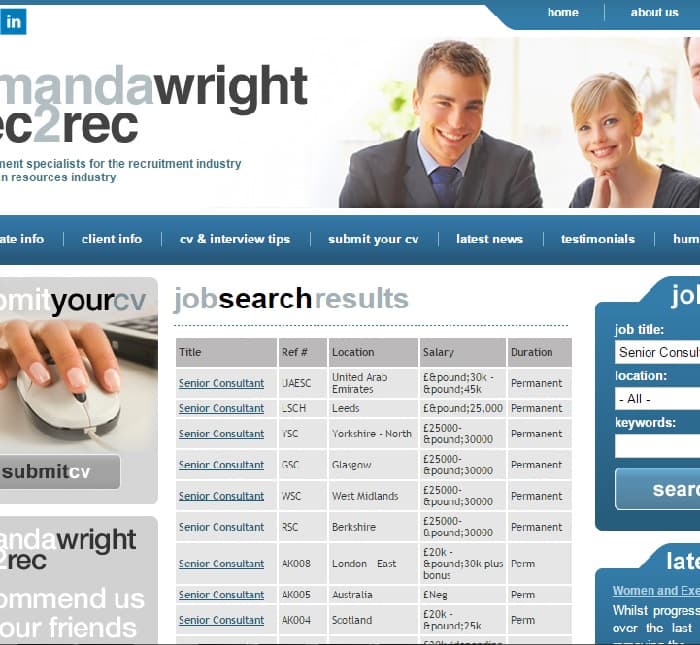The advent of the Internet has vastly simplified the process of getting your job advertisements in front of thousands of jobseekers in just a matter of minutes. However the ease with which job advertisements are now distributed means competition for jobseekers’ attention has never been so high. Jobseekers are overwhelmed by the vast quantity of job advertisements sent out to them on a daily basis, often via email. To make matters worse, studies suggest the demand for quality candidates now outstrips supply. All these factors increase the need to write quality job advertisements that pique the interest of your target market and boost response rates.
In this post I outline six tips for increasing job-advertisement response rates. Read this post carefully to ensure you are not beaten by your competition in the race to recruit high quality candidates.
1. Ensure the job title is understandable
The job title is typically the first thing the jobseeker will see. If the job title does not make sense, the reader will skip past meaning all your efforts are in vein. Therefore keep things simple and understandable when it comes to writing job titles.
Convince your client to use a commonly understood job title, at least in the ad. Avant-garde job titles such as ‘Head of Thought Leadership’ may be fine for the client, but a poorly understood job title is more damaging to response rates than all other factors combined. Most jobseekers will simply continue scanning the next job advertisement without clicking on the ad.
Here’s a list of strange job titles from the U.K. plus their understandable translations.
2. Tune into WII-FM
WII-FM stands for ‘what’s in it for me’. Readers of your job posts only really care about benefits they receive by virtue of responding. Therefore when you write job ads, focus on employee benefits, not employer demands. A 2015 study from the University of Vermont revealed job ads focusing on employee benefits outperformed ads focusing on employer demands by a ratio of three-to-one.
3. Create a great opening paragraph
Your opening paragraph must act as a salesman for the rest of your job post. In his book, Advertising Secrets of the Written Word, copywriter Joseph Sugarman calls this the ‘grease chute’ effect. The aim of your first paragraph is to get the second paragraph read; the aim of your second paragraph is to get the third paragraph read; the aim of your third paragraph is to get the fourth paragraph read, and so on.
The opening paragraph must promote readership by stating a benefit or by promoting curiosity. Rewrite the first paragraph several times. This ensures you have different versions to choose from and test against.
4. Add a logo to the job advertisement if allowed
If permitted, include your firm’s name and, if you have one, your logo to the job post. This adds to the value of your advertisement, attracts more attention and helps build your brand. Be sure to link to your website, as well as to an application or other landing page. This helps your website’s search engine optimization, improving your placement on search results pages when someone – potential clients – come looking.
Of course, if your website is dated, isn’t mobile enabled or doesn’t offer much more than basic contact information, update it before you draw more attention to it.
5. Clearly separate required and desirable skills
If you do not differentiate between required and desirable skills you risk jobseekers concluding they are not sufficiently qualified for the role even if they are. Hiring managers will ask for everything, but listing skills that cover vastly unrelated disciplines will discourage otherwise capable and talented candidates. The most talented professionals, those who are the most placeable, won’t give a second thought to jobs with “kitchen sink” requirements.
I once read a job-advert for an online-marketing executive. The ad understandably asked for marketing skills and experience. However, the advert then demanded knowledge of a multitude of programming languages such as JavaScript and Python. I simply concluded the author of the advert did not understand the role of an online marketing executive.
6. Include salary details in your job ad
It’s controversial, and your clients may not allow it, but including salary details in a job ad has been shown to bump response rates. After the requirements, 72% of jobseekers look first for salary information. Many hiring managers are reluctant, though, to include salary information because they believe it weakens their negotiating power. However in my experience the increased number of replies vastly offsets this concern. Salary details appeal to candidates since they now know they are not wasting their time by applying for a role that does not meet their financial requirements.
